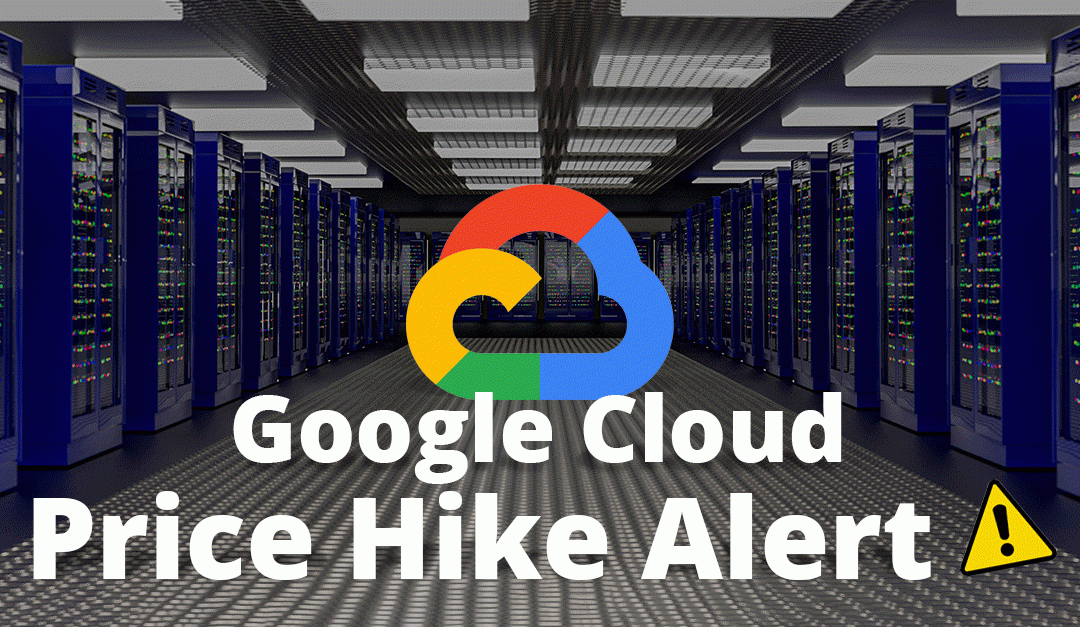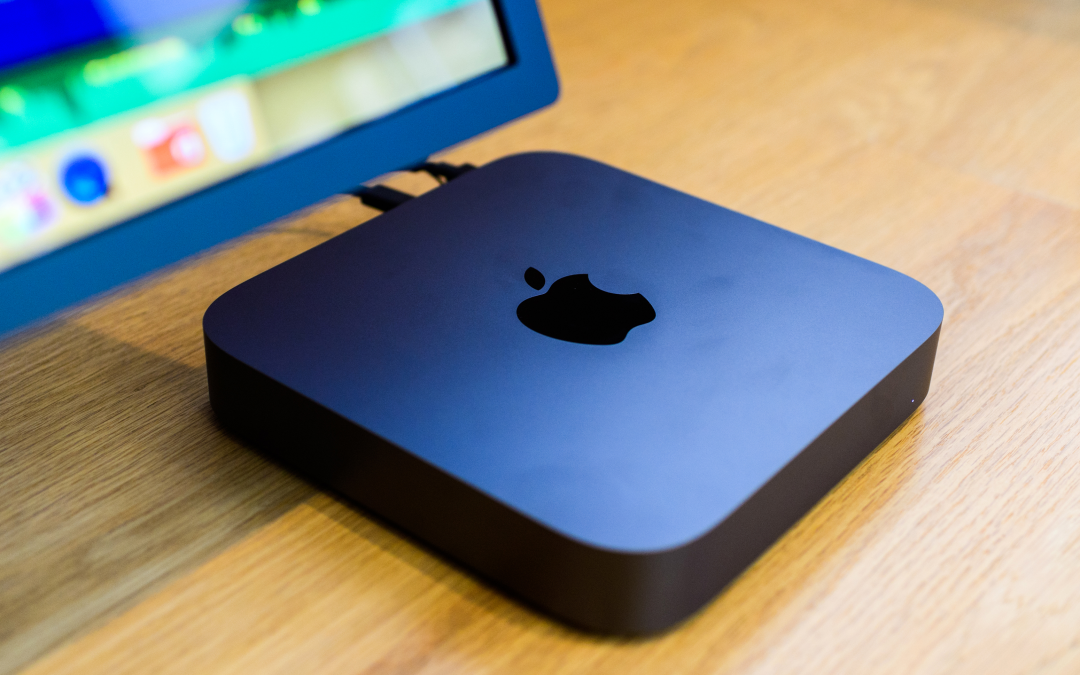
by united admin | Mar 25, 2022 | Private Cloud
The cloud industry has been bustling around from the moment Google released a new notice on its Google Cloud pricing. With new rates announced across various fundamental services, the search giant’s cloud infrastructure services will cost more as compared to before. For the existing customers, the google cloud price increase is not less than a nightmare, and for the one who is in thought of migrating to the google cloud platform for storage, computing, network, and other such services may fall in a setback. Google cloud pricing is mostly leaned towards the pay-as-you-go model from the initial days. Though there is a substantial increase in cost range, their core model is not altered, and that’s something where existing users can take a breath.
If you are not sure how these Google Cloud price changes affect your business, stay with us until the end because we are bringing you the why, how, & when factors of these Google Cloud price changes via this blog.
A note for Google Cloud customers
We are not surprised to say that the entire cloud fraternity is amused with this move of Google Cloud pricing change. Because as per trends, users were expecting lower costs while renting cloud infrastructures in the long run, but all of sudden Google Cloud platform has made them speechless. However, in a statement from the Google Cloud website, it is noted that
“Some of these changes will provide new, lower-cost options and features for Google Cloud products. Other changes will raise prices on certain products” – statement by a Google Cloud official.
Before you frame an opinion on how these latest changes may affect your business, you need to understand exactly why & what changes are made in the google cloud price offerings.
Why did Google Cloud make price changes?
According to Google, these sharp changes in google cloud pricing are due to the addition of innovations, use cases & services such as – new flexible options in Cloud Storage, data mobility, Persistent Disk snapshots, network load balancing, and elements of the Network Intelligence Center. They believe that as businesses move towards the multicloud approach, these latest changes give users more flexibility and competitive pricing approaches by comparing the prices of services to other cloud service providers.
What are the changes in Google Cloud pricing?
Here is a sneak peek of some of the notable changes made in revised Google Cloud price increases and not to forget these changes will be in effect from October 1st of 2022.
Cloud storage pricing changes:
The Google cloud price change of storage is for data mobility, including data replication written to a dual- or multi-region storage bucket and inter-region data access.
- Nearline storage and archive storage pricing will see a rise in cost in the US, EU, and Asia multi regions.
- Whereas coldline storage pricing will increase in the Asia multi-region.
- Standard replication pricing in the US, NAM4, EU and EUR4 locations will rise.
- Archive Storage at-rest storage pricing in the NAM4, EUR4, and ASIA1 will decrease.
Load balancing price changes:
From the cut-off date mentioned, as a part of revised Google Cloud price change, users can observe a trend of getting charged for outbound data processing at a fee of $0.008 to $0.012 per GB, based on a specific region.
Persistent Disk snapshot price changes:
The Persistent disk snapshot prices for Google cloud compute are revised where there are some cost-effective archive solutions, and some are with increased regional and multi-regional snapshot storage pricing.
- There are currently plans to launch a low-cost archive snapshot capability, and it is expected to roll out from the second half of 2022.
- Regional and multi-regional archive snapshot pricing will increase accordingly on their base price.
- Archive snapshots now will have a minimum billing period of 90 days.
- Regional and multi-regional standard snapshot pricing will increase.
- Standard snapshot storage will have a minimum billing period of 1 hour.
Network topology price changes:
Last year Google Cloud announced a free of charge network topology visualization tool; however, from the mentioned cut-off date, October 1st, 2022, it is no longer a free tool, charges are incurred based on connectivity tests, firewall insights, and performance dashboards based on the number of resource-hours for the resource types.
Google Cloud bills – are they increasing or decreasing?
According to the Google Cloud website, the impact of the pricing changes depends on the client’s use cases and usage. It may decrease for some users and may be high for others. Like multi-region Nearline storage, core storage features will see at least a 50% price increase. Google Cloud’s Coldline Storage Class, A operations pricing, will increase from $0.10 to $0.20 per 10,000 operations. Finally, Network Topology, which was previously available for free, will now be a premium service, with customers paying $0.0011 per resource hour consumed. Moreover, all these updates give us a sense that the revised prices lean more towards the price increase curve.
How will Google Cloud price changes impact its customers?
With the new Google Cloud price increase now, customers will be forced to be in a state where they need to adapt their portfolios and usage to decrease costs for a safer side, as these changes are very new. Still, it will be a burden to hold on for the customers.
It may not be astonishing to say that customers are already searching for some alternative solutions for tackling situations like this. In a statement from Google official it is said that the recent Google Cloud price changes are made keeping to meet the best demands of its customer and to better align in terms of pricing and offerings with other major public cloud providers like AWS, Azure in the market.
Is public cloud getting expensive in future?
According to a survey of 2021, it states that 77% of companies using cloud were surprised with their cloud expenses and some insights also states that $26.6 Billion worth of cloud resources are unused in public cloud by 2021. These stats are true to their findings, as public cloud cost management is complex, companies suffered $ 14.45 billion wastage on idle resources, $8.7 billion due to overprovisioning, $3.4 billion wasted on orphaned volumes and snapshots in the year 2021 alone ( as per data sourced from Gartner and figures estimated by B2C )
Coming back to our question, the one answer we can surely say is ‘yes’ public cloud cost can become too expensive, if it is not governed and managed effectively. You may argue with us that there are certainly public cloud management tools to effectively track and monitor your public cloud cost & resources but here you also need to pin the point that certainly these tools do also come with some sort of pricing for its usage which again adds on to your cloud budget.
Also, we can see that there are some recent announcement of price increase from major public cloud providers like Google Cloud, IBM on DB2 warehouse on cloud AWS are also hints us that there certainly possibilities some price changes may come from other players and you can’t deny it too. However relying on only public cloud for your cloud usage is surely a cash burn in the the long haul.
Paradigm shift from public clouds is a new cloud trend
Though public clouds has its own advantages and flaws still public cloud expenditures makes dents in software companies’ bottom line and market share. Because it need a proper cost governance and optimization approaches. And over the year we have noticed a trend where numerous companies drop public clouds partially or in a full pledge to avoid certain public cloud challenges like vendor lock-ins, cost managements, resource controls, etc. We are supporting our above statement with a classic example of this trend.
A classic example
Dropbox is the one of the best example where after it bids farewell to AWS public cloud and setting up their own infrastructure using combinations on-prem, private cloud models has significantly saved around $75 million over two years and there are numerous companies which are following the same paths of cloud repatriation.
What can customers think of as an alternative solution?
It’s not absurd to say that the one best alternative solution to tackle these uncertainties put forward on customers by these public cloud service providers is a dedicated private cloud service.
Yes, that is true to stress here that the private cloud gives users more flexibility in terms of pricing, infrastructures, services, and many more. In fact, a private cloud will have greater control over it than a public cloud because they operate completely on your terms and choices. Say no to vendor lock-ins since private clouds are extremely available, customizable, and portable.
Now many of you may not be fully keen to leverage either only a public cloud or a private cloud completely, so how about the mix of both worlds giving you hybrid advantages. Since it is the era of hybrid cloud, it is not just a strategic move anymore but merely a need to adapt to these changes.
“What you may get in a public cloud, many are not in a private cloud and vice versa, but you can certainly enjoy both worlds via the hybrid cloud. “
Key benefits of private cloud VS public cloud:
- Fully flexible with low latency and on-demand scalability
- Highly available with low down times and supports critical workload customizations
- Greater control of your assets where you manage your most of your services unlike public clouds
- Reduced prices on a long term usage as compared to public clouds with flexible and standard packages
- Managed security with clear understanding of roles and responsibilities between customers & private cloud service providers
Keeping all the benefits of cloud computing but with greater controls, cost savings and security of an enterprise-grade private cloud infrastructure, United Private Cloud offer its users a dedicated software defined private cloud solution ‘G3 private Cloud’, powered by VMware, Hyper-V, OpenStack. It delivers high performance, availability, scalability, reliability, and connectivity to all major public clouds giving you a hybrid way. Comes with guaranteed availability of 99.999% with N+M clusters, multi cloud software defined edge cloud, multifactor WAN connector with SD-WAN acceleration, multi cloud connectivity, and fully flexible RAM size configurations without lock-ins on specific VM type.
Our Promise:
- 30% lower cost than the leading public clouds
- Enables you gain performance advantages
- Rapidly respond to unpredictable demand
- Easily solve data sovereignty and compliance requirements.
We specialize in hybrid hosting solutions. Contact us to know more about how we can unify these disparate cloud architectures for you.

by Parna Banerjee | Aug 26, 2021 | Private Cloud, Uncategorized
The Mac mini is exactly what it says it is: a mini Mac. It’s a compact, portable desktop computer that can transform any screen into a Mac-powered smart computer.
Apple’s computers are fantastic pieces of machinery – there is no doubt about it. But what is it about the Mac mini that makes them so popular among programmers? Read this blog and find out!
-
-
-
- Exploit mitigation: It includes mechanisms that can help protect against remote code execution or zero-day vulnerability exploits. This includes a hardware-level security mechanism known as pointer authentication, making it far more difficult for an attacker to modify pointers in memory and provides a layer of security against buffer overflow exploits.
- Vulnerability: The checkm8 vulnerability that affected the T2 is now no longer present on the M1-equipped Mac Mini. The T2 chip isn’t even present in M1 Macs. Instead, the security functionality that the T2 supported is baked into the M1.
- System Integrity: During startup, system integrity allows for a hardware-level verification of the operating system. It also continues to protect macOS authorizations in the background as it runs. This strengthens protections against sophisticated malware that tries to hijack macOS regularly.
- Security: One of the main reasons why developers don’t fancy windows is security. They don’t want their work to be hijacked over by a malicious hacker, and they certainly don’t want to hold their breath every time they’re prompted to click on a pop-up. Some of the security features of the Mac mini has been explained below:
- Cross-Platform Compatability: Working with MAC OS X allows you to run all of the major operating systems on your machine, which is a huge benefit for programmers. Running OS X on a Windows device would be difficult, and the only way to do so would be to install hacked versions of OS X. In contrast, Mac mini can efficiently run Windows and even Linux in a virtual environment. Developers can use Parallels or a similar virtualization tool to give multiple operating systems on their Mac mini if it is sufficiently equipped (it means a Mac mini should have an i7 processor, 16GB of RAM, and absolutely SSD instead of a hard drive).
For developers, this is a significant appeal. If they have a powerful Mac mini with Parallels installed, they can run Windows and Linux alongside MacOS applications, even dragging and dropping between them. This level of flexibility is unrivaled by any other operating system.
- Applications and UX: Another reason for the success of the Mac mini is its friendly and elegant user interface, as well as a large number of high-quality applications available. For instance, applications like Alfred, Amphetamine, Pocket, etc are apps that help boost the productivity of many developers.
Why did that prove to be such a game-changer?
The popularity of Apple devices among developers coincided with an era in which web development became more sophisticated, necessitating more specialized tools. The macOS X environment was poised to fulfill the need with text editors, package managers, etc. So, an increasing number of developers began to adopt macOS due to the accurate perception that they provided the most sophisticated development environment.
What are the hardware capabilities of the Mac mini?
- Running Apps on M1 Mac mini: Apple has created tools that allow developers to create Universal app binaries that run flawlessly on both Apple Silicon and Intel chips and the Rosetta 2 translation layer that enables x86 apps to run on the M1 chip.
- Apple M1 Chip: Apple has made the M1 do precisely what the company wants it to because it is a custom design. As a result, many different Mac mini components, including the GPU and the T2 security chip, have been integrated into the M1’s design.
This process of miniaturization results in greater efficiency or lower power consumption.
Power consumption is likely to be the most tangible benefit for the developers here. The new M1chips use half the power of previous Intel chips, which means double the battery life.
Ready to get your organization connected with UnitedMac?
UnitedMac provides managed & dedicated cloud Mac mini devices that can be accessed on-demand for app development and enterprise builds. Get services from our most secure and resilient cloud data centers in San Francisco, USA, and Amsterdam, Netherlands.
Visit our website to know more!

by Arifa Bhat | Nov 5, 2020 | Private Cloud
All clouds become private clouds whenever a single customer with fully isolated access is committed to the underlying IT infrastructure.
For a single company, a private cloud is a storage environment with public cloud advantages but housed in the data center of a company or through a third-party provider. Private clouds are recognized for their efficiency, security, and expandability and are therefore often the option of choice for enterprise workload infrastructure. Private clouds provide individualized clients with fully separate databases, software instances, and supporting infrastructure.
At present, and we are experiencing an age in which digital transformation is not an option anymore, but central to business processes. The so-called ‘new normal’ is beginning to take shape, and it seems like several organizations are starting to embrace cloud-based technologies to promote flexible and remote work, if possible.
While robust antivirus and firewall security are needed in every cloud environment, private cloud solutions give decision-makers an enhanced sense of security. Critical information is kept safe and protected by using hardware specifically dedicated to the organization’s needs. This is achievable through what is called a single-tenant cloud architecture by the industry. Think of residents as corporations. But they’re searching for hardware to house their data in this situation.
For a private cloud environment, cloud access is even more protected since it is accessed through private and secure network links. Besides, private clouds have a fixed billing model instead of a prepaid method, which essentially helps organizations to plan growth and budget more accurately.
We have a completely operated business support service for 24/7/365 with 15 min time for response together with expert escalation every half an hour. With 99.999% high availability N+M clusters, United Private Cloud has a computing, software-defined network, and storage services. Our great sense of customer project recognition means that we are continually working to provide solutions. This sense of identity also implies that we respect and facilitate smooth communication with the teams of our customers and guarantee that the best value is received.
Companies are opting for United Private Cloud to receive gains in performances, cost reduction, adapt quickly to unforeseen contingencies, and overcome data sovereignty effectively along with worldwide enforcement requirements. To have a better understanding of what else United Private Cloud has in store for you, register today for a free preview.

by united admin | Oct 26, 2020 | Private Cloud
A private cloud is a scalable hosting solution providing your business with agility and redundancy in the IT infrastructure. Private cloud solutions are suitable for businesses with large computing and storage requirements, need to respond promptly to innovation, or have control, security, and compliance requirements. It’s not easy to build an on-site infrastructure, let alone build the cloud infrastructure on top of that.
With greater reliability, higher availability, dynamic scalability, and resource elasticity, cloud technology provides better computing and storing data approach. Of course, the network isn’t easy to create and comes with its collection of difficulties and obstacles. Although switching to the cloud is advantageous, companies have questions about data protection and honesty, which is why companies are keen on introducing private clouds. Apart from better infrastructure control, running on a private cloud will have full security, privacy, and data sensitivity control position.
A private cloud is costly to manage. While there is plenty of open-source Infrastructure as a Service (IaaS) cloud services available free of charge, you need to consider the direct expense of hardware leasing or ownership, data center rental, bandwidth, etc redundancy capacity just to get started. When this is in place, you must always count the indirect costs from the protection and organizational perspective to ensure that the system is stable and well maintained.
There is a common mistake where underused or dormant instances are left running indefinitely, with no significant long-term value them. Always tag instances with a meaningful description, along with the details of the person in charge, and their termination policy (delete after 1 week after creation). Enforce more stringent rules to shut down or terminate underutilized instances to save space, CPU power, and energy. Plan a regular audit for your instances and hardware assessment to ensure that the resources are not over-/underused.
Many companies make it a long-term error by entirely outsourcing infrastructure maintenance to others, and do not take advantage of organically building up the in-house team. We need to recruit a cloud leader at least and create a team of in-house experts around it, taking advantage of the technology that is already in place. Creating an expert team takes time to train, share expertise, and develop skills, which gradually gain experience and confidence to attain a professional level. It is the most substantial long-term investment for the company to have a large team for years or even decades to support the easily scalable cloud infrastructure. It would also keep the cloud infrastructure secure and reduce the possibility of managing confidential data on-site from external hands.
United Private Cloud comes with all the advantages of cloud storage but with an enterprise-grade private cloud with greater controls and security. Our United Private Cloud private cloud, powered by VMware technologies, has a guaranteed 30 percent lower cost than leading public clouds. United Private Cloud helps organizations to achieve performance advantages, minimize costs, adapt rapidly to unpredictable demand, and solve data sovereignty and enforcement requirements with ease. We also include performance computing (VMware DRS) with 100K+ IOPS and 10g-100 g networking over all-flash storage, and fully customizable vCPU and RAM size configurations without lock-in to different types of VM along with adaptive resizing and optimization services.
When moving into new technologies, such as cloud computing, there are still difficulties and obstacles. We need to understand the tradeoff and know how to use all the resources we have, so we do not make the same mistakes again.
To get a better insight into what else G3 Silicon UnitedCloud has got in store, sign up for a free demo today.

by united admin | Oct 15, 2020 | Private Cloud
In today’s world, one can confidently conclude that enterprise computing’s future lies in the cloud. Cloud offers much-needed mobility for IT operations, thus cutting hardware and development expenses. The innovation brought together by the public cloud providers in terms of serverless computing, low-cost storage, flexible billing models, scalability, elasticity, enterprise-grade security, and a range of purpose-designed services has pushed many companies around the world to rethink their IT environment so that they can utilize the cloud to accelerate and maintain their digital transformation.
Migrating to cloud destinations brings with it a multitude of challenges that enable you to learn about service providers and how they vary. Organizations find it challenging to develop skills and expertise to switch to only one platform, resulting in the need to replace or eliminate certain team members and upgrade the current staff with cloud skills that can be expensive and disruptive. It is no wonder that the thought of doing so can be overwhelming across several private cloud platforms.
Cloud migration services offered by United Private Cloud can seamlessly migrate your applications, data, and infrastructure to the cloud. Our experts can help you build your migration strategy, evaluate your portfolio of applications, review your cost structure, and identify the best cloud platform for your needs.
United Private Cloud’s G3 IaaS Private Cloud Platform is its 3rd generation private cloud solution, developed, hardened, and perfected over a period of 15 years while serving many hundreds of enterprises and governments across the globe. G3 IaaS delivers high performance, 99.999% availability, locked-down security, and software-defined agility and scalability while delivering greater than 30% cost savings versus leading public clouds and greater than 70% cost savings versus other leading private clouds.
The process of cloud migration is divided into three phases – the pre-migration planning, execution, and testing phases. We evaluate your current IT infrastructure and determine which applications to migrate. Customized migration solutions are provided based on customer requirements, ensuring minimal interruption of business operations for customers. The migration architecture and data need to be migrated after determination, executing the migration process to the cloud, and ensuring minimal disruption to normal operations. We also provide post-migration support with real-time monitoring of application performance in the new environment, access data security to ensure it meets all regulatory requirements, and update OS drivers to match the new environment.
Organizations should look to monitoring performance not as a post-migration afterthought but as an integral part of their digital transformation and cloud journey. Monitoring should be incorporated into benchmarking KPIs at every step of the way, track user experience, understand performance deviations, forecast capability requirements, and ensure a seamless transition and benefit from actionable insight for scaling and cloud expansion.
With our systematic account management paradigm, we perform continuous operational tuning and weekly follow-up with the customers to ensure that they optimize and use the solution’s full potential. It’s a consultative approach and a continuous process of serving our customers better.
Visit the United Private Cloud to interact with experts to guide you to the right solution!

by united admin | Aug 14, 2020 | Private Cloud
Enhance your cloud computing capabilities with United Private Cloud
Organizations are increasingly turning to private clouds for their data needs. Cloud computing helps organizations optimize their applications and processes to generate the best value from their IT investments. Cloud adoption is perceived to be very complex and challenging for most organizations. In a survey conducted by Statista, around 83% of respondents cited cloud security as a significant challenge. Security concerns are justified with increasing frequency and potency of cyber attacks, especially with leading public clouds and prominent companies being the prime target of hackers. There are several other challenges that public clouds face, such as managing governance and a lack of resources and expertise. Public clouds cannot afford to customize governance and expertise for every company. And as such private clouds are a far more viable option.
Private clouds help organizations of all sizes take advantage of customized governance and monitoring mechanisms. Companies are facing dynamic and unpredictable computing needs as they rapidly expand and globalize. A private cloud solution offers organizations the ability to meet security, governance, and compliance needs without having to manage the hardware themselves personally.
United Private Cloud offers all the powerful benefits of cloud computing while also providing greater control and the enhanced security of an enterprise-grade private cloud. VMware technologies power our software-defined private cloud, the United Private Cloud private cloud solution comes with a guaranteed 30% lower cost than the leading public clouds. Gain performance advantages at much lower costs while rapidly responding to the unpredictable demands of business with United Private Cloud. Resolve your data sovereignty and compliance requirements with the G3 software-defined cloud by United Private Cloud.
United Private Cloud helps organizations simplify the migration to a highly agile software-defined private cloud. We provide a high performance compute through all-flash storage with 100K+ IOPS and 10g-100g networking. The performance parameters help organizations take full advantage of their cloud resources and enhance their applications. Organizations are required to be available consistently to cater to the growing demands of your business. Unscheduled downtimes can impact the bottom line and company reputation adversely. United Private Cloud guarantees a 99.999% availability of N+M clusters compared to the standard SLA of 99.99% provided by leading public clouds. A downtime of a few minutes can translate to huge losses. We provide 24/7/365 days fully managed enterprise support service with a 15 minute response time and the expert escalation of requests every 30 min of reporting until the request gets resolved.
We provide a cost-optimized managed cloud service that is 30% cheaper than AWS, Azure, and GCP; it is 50% cheaper than an on-prem data center. Deploy large and complex workloads efficiently with our on-demand connectivity options to 300+ carriers. We allow you to deploy your data center in your own on-prem or 200+ global data center networks. Our integrated Disaster Recovery (DR) service with <1min RPO and 15min RTO help organizations deal with disaster outcomes and assist Business Continuity planning. We provide a highly secure private cloud with locked-down network security, restricted IP access, Zero trust security, and locked down ports. In this ever-evolving technological landscape, it’s time to go private.
Visit the United Private Cloud website today, for a high-performance, high availability private cloud solution for all your business needs.







